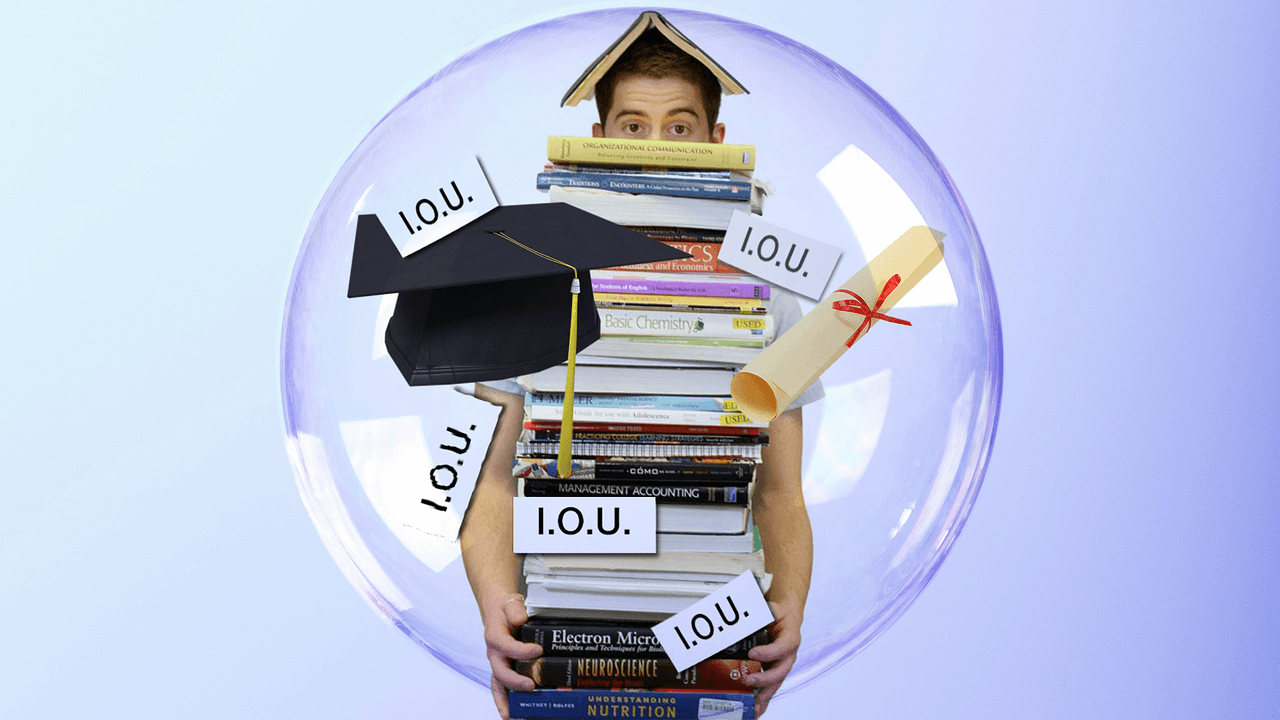Student-centric advice and objective recommendations
Higher education has never been more confusing or expensive. Our goal is to help you navigate the very big decisions related to higher ed with objective information and expert advice. Each piece of content on the site is original, based on extensive research, and reviewed by multiple editors, including a subject matter expert. This ensures that all of our content is up-to-date, useful, accurate, and thorough.
Our reviews and recommendations are based on extensive research, testing, and feedback. We may receive commission from links on our website, but that doesn’t affect our editors’ opinions. Our marketing partners don’t review, approve or endorse our editorial content. It’s accurate to the best of our knowledge when posted. You can find a complete list of our partners here.
Guide to Student Loan Relief for COVID-19
 By
Kayla Korzekwinski
By
Kayla Korzekwinski 
Kayla Korzekwinski is a Scholarships360 content writer. She earned her BA from the University of North Carolina at Chapel Hill, where she studied Advertising/PR, Rhetorical Communication, and Anthropology. Kayla has worked on communications for non-profits and student organizations. She loves to write and come up with new ways to express ideas.
Full BioLearn about our editorial policies

The U.S. Department of Education’s COVID-19 relief for student loans ended. The 0% interest rate ended Sept. 1, 2023. Loan payments restarted in October 2023. Check out the Federal Student Aid designated announcement page for recent updates.
The COVID-19 pandemic is slowing down in the United States, but the financial repercussions still remain. Many student loan borrowers are searching for relief of their debt due to the coronavirus. Fortunately, there are several relief programs in place for student loan borrowers. Keep reading to learn more about student loan relief for COVID-19!
Also see: How to lower your monthly student loan payment
Administrative forbearance
All federal student loan borrowers have received an automatic, interest-free pause on monthly payments. It will continue until at least May 1, 2022
The forbearance is retroactive to March 13, 2020. If you made federal student loan payments after this date, contact your loan servicer to request a refund of the payments.
Borrowers have the option to continue making payments on their student loans during the administrative forbearance. In fact, if you have the means, it may be wise to continue making payments because of the 0% interest rate. If you take advantage of the forbearance, be sure to use this time to get your finances in order and prepare for when repayments resume.
According to the Department of Education, borrowers will receive notice at least 21 days before monthly repayments must be made. Contact your loan servicer to calculate what your monthly payment will be when payments resume, or to adjust your repayment plan.
Related: How to get your student loans deferred
Pause in collections
There is also a pause on all collections for federal student loans that are in default. Activities such as wage garnishment will not take place during the administrative forbearance.
See also: Student loan default: How to get out of it
Extension on IDR recertification
Federal income-driven repayment (IDR) plans require borrowers to re-certify their income annually. Now, borrowers do not need to re-certify until after the relief period. This is regardless of if their recertification date would have been during the relief period or not. Borrowers on an IDR plan will also receive an extension to request a new monthly payment.
If your income has changed significantly due to the pandemic, this will be taken into consideration when you re-certify. You can calculate your new monthly payment early by visiting the Department of Education’s IDR page and clicking “apply now.” From there, click “recalculate my monthly payment.”
The DOE will notify you when it comes time to complete the recertification again.
Loan forgiveness
There is no COVID-19 forgiveness plan for federal or private student loans. However, borrowers who are seeking repayment through Public Service Loan Forgiveness (PSLF) or an income-driven repayment plan may wonder how the administrative forbearance affects their timeframe.
Suspended payments count toward the required number of qualified monthly payments needed for forgiveness. For PSLF, you must continue to work full-time for a qualifying employer. You will have to certify that you remained employed during the suspension.
Learn more about federal relief programs from the Department of Education.
Private loan relief
The above relief programs apply only to federal student loans. However, many private lenders are also offering COVID-19 relief programs.
For example, CommonBond is offering forbearance for as long as the national emergency persists. This forbearance is not interest-free, but it will not count toward their already existing forbearance limits. CommonBond is also canceling fees for late payments.
Earnest is offering forbearance in 1 – month increments. They are also offering the option to pay only the interest on loan balances for 3 – month increments.
Most private lenders offer deferment and forbearance options due to financial hardship. Most of these programs apply to student loan relief due to COVID-19. Contact your private loan servicer or lender to learn more about relief options for you.
Take advantage of these student loan relief programs that the government is offering due to COVID-19!
Keep reading: No interest due: Should you pay your student loans?





